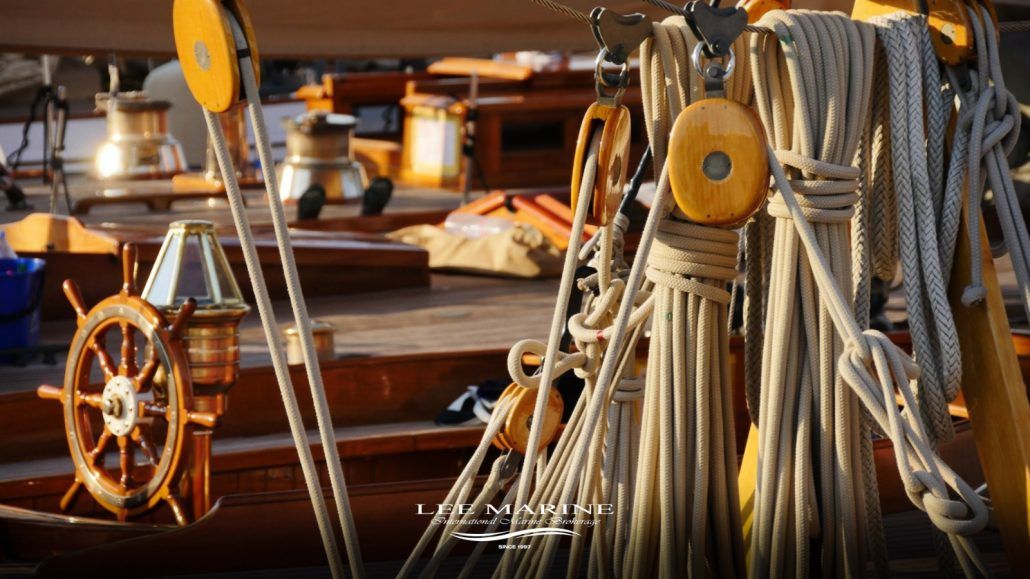Embarking on a yacht is like stepping into a floating masterpiece, a symphony of engineering and design harmonizing to create a vessel that seamlessly glides through the open sea. To truly appreciate the marvel that is a yacht, one must understand its intricate anatomy, the sum of its carefully crafted parts. Join us on a journey to unravel the mysteries of these maritime marvels.
Exploring the anatomy of a yacht
1. Hull: The heart of a yacht’s anatomy
At the core of every yacht lies its hull, the very foundation that determines its seaworthiness and performance. Hulls come in various shapes — monohulls with a single hull and catamarans with two parallel hulls. The design of the hull influences stability, speed, and maneuverability, making it a critical component of yacht anatomy.
2. Deck: Where luxury meets functionality
The deck is the yacht’s open-air platform, serving as both a functional space for navigation and a luxurious area for leisure. Divided into foredeck, side decks, and aft deck, each section has its purpose. The foredeck often houses the anchor and provides a panoramic view, while the aft deck may feature dining and lounging spaces, seamlessly blending comfort with functionality.
3. Superstructure: Where the anatomy of a yacht takes elegant shape
Rising above the deck, the superstructure is the yacht’s architectural masterpiece. It houses cabins, saloons, and other living spaces. The design varies widely, from sleek and minimalist to opulent and extravagant. A well-designed superstructure maximizes natural light, enhances visibility, and contributes to the overall aesthetic appeal of the yacht.
4. Bridge: The captain’s domain in a yacht’s anatomy
Perched atop the superstructure, the bridge is the command center where the captain and crew navigate the yacht. The bridge is equipped with a myriad of instruments, including GPS, radar, and communication systems, ensuring precise navigation through the vast expanse of the sea. The bridge offers an unparalleled view, allowing the captain to steer the yacht with confidence.
5. Mast and rigging: Sails unfurled
For sailing yachts, the mast and rigging are essential components. The mast stands tall, supporting the sails that harness the wind’s power. Rigging, comprising shrouds and stays, provides structural support, ensuring the mast withstands the forces exerted by the sails. Together, they form the dynamic duo that propels the yacht forward, embracing the age-old romance of sailing.
6. Sails: Capturing the wind’s essence
Sails are the wings of a sailing yacht, capturing the wind’s essence to propel the vessel forward. Main sails, jibs, and spinnakers are common types, each serving a specific purpose. Modern advancements in sail technology have led to the development of efficient, easily adjustable sails that enhance both speed and maneuverability.
7. Engine room: Powering the voyage
In motor yachts, the engine room is the heartbeat of the vessel, housing powerful engines that provide propulsion. These engines can run on diesel, hybrid, or even electric power, reflecting the yachting industry’s growing emphasis on sustainability. The engine room also accommodates generators, water makers, and other systems crucial for the yacht’s autonomy.
8. Stabilizers: Navigating the waves
To counter the natural rolling motion caused by waves, yachts often employ stabilizers. These devices, typically fins or gyroscopes, reduce the yacht’s motion, enhancing comfort for passengers and crew. Stabilizers have become integral, especially in larger yachts where minimizing motion ensures a smoother, more enjoyable experience on board.
9. Tender garage: Small vessels, big adventures
Many yachts are equipped with a tender garage, a compartment that houses smaller boats or tenders. These vessels serve various purposes, from shuttling passengers to shore to engaging in water sports and exploration. The tender garage showcases the versatility of yachts, transforming them into vessels of both opulence and adventure.
10. Swim platform: Gateway to the sea
Extending from the aft deck, the swim platform is a gateway to the sea, inviting passengers to indulge in water activities. Whether it’s a refreshing dip, a snorkeling adventure, or the launching of water toys, the swim platform adds an element of aquatic delight to the yacht experience, and is an essential part of the vessel’s anatomy.
Understanding the anatomy of a yacht unveils the synergy between form and function, luxury, and performance. From the hull that embraces the sea to the superstructure that defines elegance, each part plays a vital role in crafting the perfect yachting experience. Whether propelled by wind or engines, every yacht is a masterpiece on the water, inviting enthusiasts to explore the world in unparalleled style. As we navigate the intricacies of these maritime marvels, we gain a profound appreciation for the craftsmanship and engineering that make yachting a truly extraordinary endeavor.

